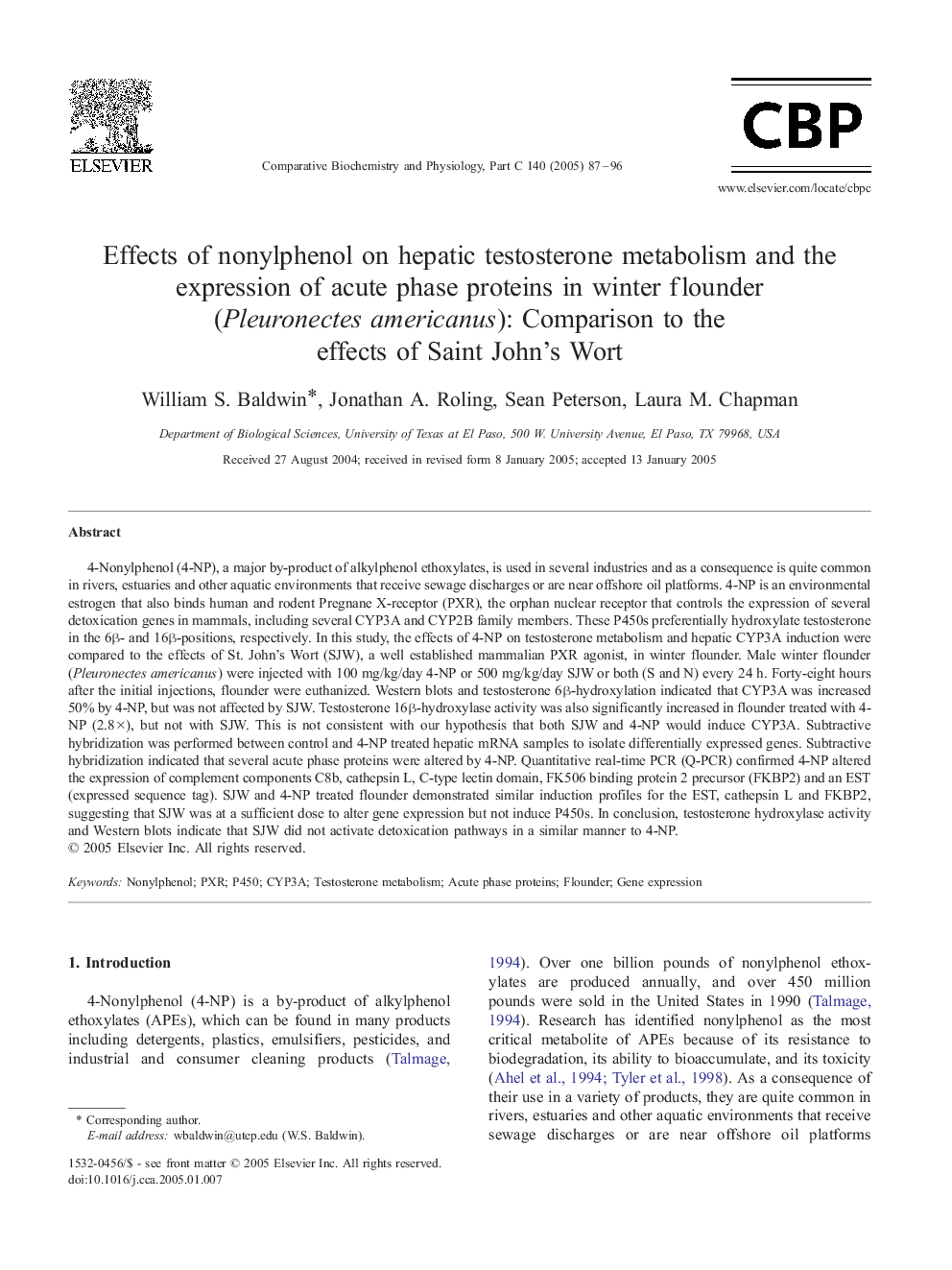| Article ID | Journal | Published Year | Pages | File Type |
|---|---|---|---|---|
| 10821828 | Comparative Biochemistry and Physiology Part C: Toxicology & Pharmacology | 2005 | 10 Pages |
Abstract
4-Nonylphenol (4-NP), a major by-product of alkylphenol ethoxylates, is used in several industries and as a consequence is quite common in rivers, estuaries and other aquatic environments that receive sewage discharges or are near offshore oil platforms. 4-NP is an environmental estrogen that also binds human and rodent Pregnane X-receptor (PXR), the orphan nuclear receptor that controls the expression of several detoxication genes in mammals, including several CYP3A and CYP2B family members. These P450s preferentially hydroxylate testosterone in the 6β- and 16β-positions, respectively. In this study, the effects of 4-NP on testosterone metabolism and hepatic CYP3A induction were compared to the effects of St. John's Wort (SJW), a well established mammalian PXR agonist, in winter flounder. Male winter flounder (Pleuronectes americanus) were injected with 100 mg/kg/day 4-NP or 500 mg/kg/day SJW or both (S and N) every 24 h. Forty-eight hours after the initial injections, flounder were euthanized. Western blots and testosterone 6β-hydroxylation indicated that CYP3A was increased 50% by 4-NP, but was not affected by SJW. Testosterone 16β-hydroxylase activity was also significantly increased in flounder treated with 4-NP (2.8Ã), but not with SJW. This is not consistent with our hypothesis that both SJW and 4-NP would induce CYP3A. Subtractive hybridization was performed between control and 4-NP treated hepatic mRNA samples to isolate differentially expressed genes. Subtractive hybridization indicated that several acute phase proteins were altered by 4-NP. Quantitative real-time PCR (Q-PCR) confirmed 4-NP altered the expression of complement components C8b, cathepsin L, C-type lectin domain, FK506 binding protein 2 precursor (FKBP2) and an EST (expressed sequence tag). SJW and 4-NP treated flounder demonstrated similar induction profiles for the EST, cathepsin L and FKBP2, suggesting that SJW was at a sufficient dose to alter gene expression but not induce P450s. In conclusion, testosterone hydroxylase activity and Western blots indicate that SJW did not activate detoxication pathways in a similar manner to 4-NP.
Related Topics
Life Sciences
Biochemistry, Genetics and Molecular Biology
Biochemistry
Authors
William S. Baldwin, Jonathan A. Roling, Sean Peterson, Laura M. Chapman,
